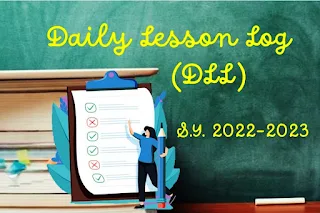In this blog, we will provide you with valuable tips and practical steps to help you master the art of writing effective editorial columns. From selecting engaging topics to structuring your content and incorporating persuasive language, this guide will empower you to make a lasting impact with your writing. Get ready to unleash your editorial prowess and become a powerful voice in the world of blogging. Let's dive in and explore the secrets to crafting compelling editorial columns!
Characteristics of Editorial Writing Made Simple:
An editorial is like an opinionated news story that shares the newspaper's viewpoint on a specific issue. It represents the collective opinion of the newspaper's editors and business managers. Unlike other articles, editorials are not signed by individual writers. Their purpose is to influence public opinion, encourage critical thinking, and sometimes spur action on important topics.
Here are the main characteristics of editorial writing:
Structure: Editorials have an introduction, body, and conclusion, just like other news stories.
Objective Explanation: They provide an unbiased explanation of the issue, especially if it's complex, to help readers understand it better. Begin by providing an objective explanation of the issue or controversy at hand. Present the facts, using the five W's and the H (who, what, when, where, why, and how) to provide a comprehensive overview. Support your statements with relevant quotations and information from reliable sources.
Timeliness: Editorials are written with a current news angle to address relevant and timely issues.
Opposing Viewpoints: They include opinions from the opposing side that directly challenge the writer's arguments. Acknowledge the opposing viewpoints or arguments related to the issue. Clearly identify the individuals or groups that oppose your stance. Use factual information and quotations to present their opinions objectively, ensuring a fair representation of their perspective.
Professional Tone: Good editorials focus on the issues and avoid personal attacks or name-calling. They present opinions in a respectful and professional manner.
Alternative Solutions: Editorials go beyond simply complaining about a problem. They offer constructive criticism and suggest proactive solutions to improve the situation.
Strong Conclusion: A well-written editorial concludes with a concise and powerful summary of the writer's opinion, leaving a lasting impact on the reader. End your editorial with a compelling conclusion that leaves a lasting impression on your readers. Offer solutions to the problem at hand or challenge your audience to take action and be informed. Incorporate a powerful quotation or a thought-provoking rhetorical question that encourages further reflection and discussion.
By understanding these characteristics, you can write effective editorials that engage readers, promote thoughtful discussions, and inspire positive change.
Writing an Editorial - Simple Steps:
Writing an effective editorial involves several key steps. Here's a simplified breakdown:
Choose a Relevant Topic: Select a significant topic with current news relevance that captures readers' interest.
Gather Information: Collect facts and information through objective research and reporting. Ensure your sources are reliable.
State Your Opinion: Express your viewpoint briefly and clearly, similar to a thesis statement, to establish your stance.
Explain the Issue: Provide an objective explanation of the topic, just like a reporter would, highlighting its importance and relevance.
Present Opposing Viewpoint: Start by presenting the opposing viewpoint along with supporting quotes and facts.
Refute the Opposing View: Counter the opposing arguments by using facts, details, figures, and quotes to pick apart their logic.
Acknowledge Valid Points: Concede a valid point made by the opposition to demonstrate rationality and fairness.
Reinforce Key Phrases: Repeat important phrases to emphasize your ideas and leave a lasting impact on readers.
Offer Realistic Solutions: Provide practical solutions that go beyond common knowledge. Encourage critical thinking and proactive responses.
Conclude Powerfully: Wrap up your editorial with a punchy conclusion that restates your thesis statement, leaving a strong impression.
Keep it Concise: Limit your editorial to around 500 words. Every word should count. Avoid using "I" to maintain objectivity.
By following these steps, you can craft a compelling and impactful editorial that effectively communicates your opinion while engaging and influencing your readers.
A Sample Structure - Simplified:
Here's a simplified breakdown of the sample structure for writing an editorial:
I. Objective Explanation: Begin with a clear and objective explanation of the issue or controversy using the five W's and the H. Include relevant facts and quotations from reliable sources.
II. Present Opposition: Present the opposing viewpoint, identifying the specific people or groups who hold opposing opinions. Use facts and quotations to objectively state their views, ensuring you address a strong position.
III. Refute Opposition's Beliefs: Refute the opposition's beliefs directly, using a transitional phrase. Present additional facts and quotations that support your position. Concede a valid point from the opposition to show fairness and rationality.
IV. Provide Reasons and Analogies: Give your own reasons in a logical order, starting with strong arguments and building up to the strongest ones. Use original reasons and analogies to support your position and enhance your credibility.
V. Conclude Strongly: End with a powerful conclusion. Offer solutions to the problem or challenge readers to be informed and take action. You can include an effective quotation from a respected source or pose a rhetorical question to leave a lasting impact.
By following this simplified structure, you can create a well-organized and persuasive editorial that effectively presents your viewpoint on the issue at hand. But, remember, writing an effective editorial column takes practice and continuous improvement. By following these tips and steps, you can create compelling and influential content for your blog post.
Prepare to unlock your editorial writing potential as we embark on this journey together. Get ready to craft compelling columns that inspire, inform, and ignite change. Let's dive into the art of editorial writing and make your voice heard!





